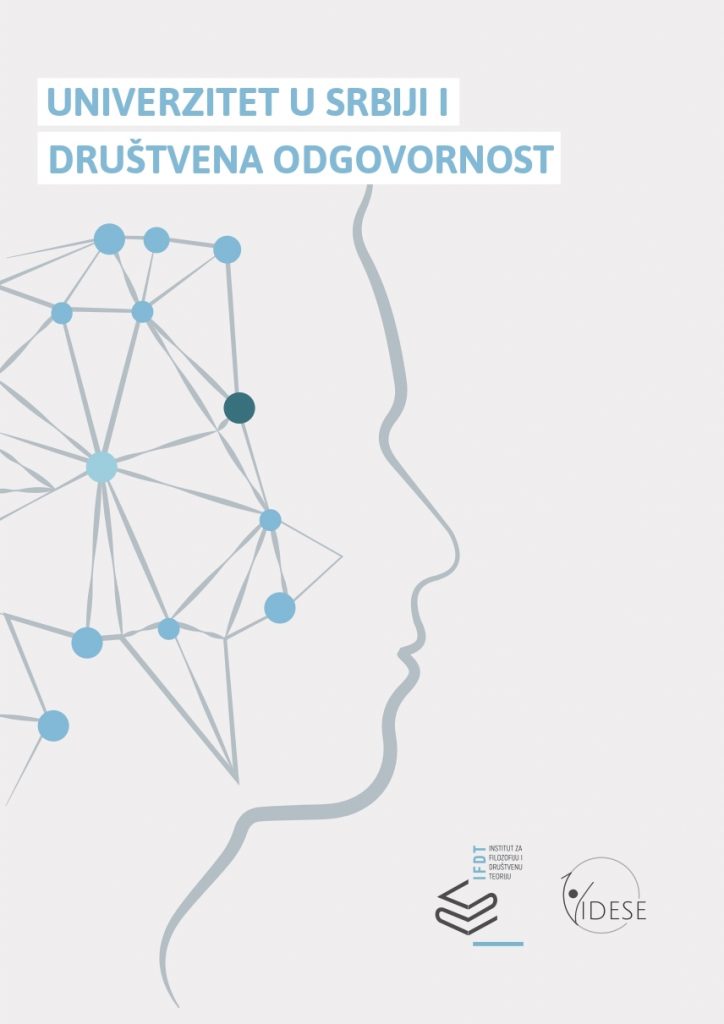03 Jun UNIVERSITY IN SERBIA AND SOCIAL RESPONSIBILITY
This publication was created within the project “School of Engagement – How to Achieve Democracy in Serbia?” Implemented by the Institute for Democratic Engagement in Southeast Europe in partnership with the Institute of Philosophy and Social Theory of the University of Belgrade, with the support of the Open Society Foundation. The views expressed in the text represent the views of the authors.
The study in front of you consists of two parts. Within the first part, Chapter 1 provides a basic overview of the key terms used in the qualitative part of the research: narrative, discourse and metanarrative. Chapter 2 provides a systematization of the development of the idea and role of universities in society from the emergence of the modern state to the present day. These two chapters represent the foundation of the analytical framework that served in the design of research and analysis and interpretation of qualitative data, and ends with a tabular presentation of narratives and metanarratives. Chapter 3 presents the first of a total of four chapters in which the authors present the findings from the qualitative part of the research and refers to the economic dimension of social engagement of the university. It is followed by a chapter on the socio-structural dimension (Chapter 4), followed by chapters on the political (Chapter 5) and finally the cultural dimension (Chapter 6). It is important to note that these four thematic chapters (3-6) in their conclusions refer to a broader analytical framework related to the narratives and metanarratives from the second chapter. This is followed by Chapter 6, which summarizes narratives in the context of the four presumed dimensions of social engagement and provides a methodological overview of the research concept itself and its analytical framework. In that sense, chapters 1 to 6 form one whole within this research.
Within the second part of the study, there is only one chapter (Chapter 1) where the results of research related to the social engagement of the academic community in Serbia are presented. The chapter contains an analytical framework, the method used in data collection, a description of the questionnaire used as an instrument, and a description of the research itself, the limitations and, finally, the data analysis itself and the conclusions.
Content and introduction can be found here



